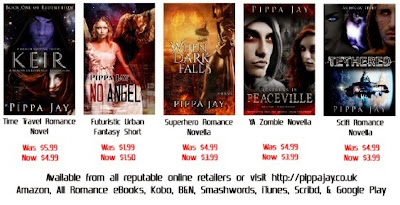“When I was a kid,” says George Clooney’s
character Frank in TOMORROWLAND, “the future was different.”
Think about that statement for a minute and
see if you don’t agree. Frank was eleven years old in 1964, (just my age, as it
happens) a hopeful child genius crashing a contest for amateur inventors at the
World’s Fair in New York. In those days we believed science and good old
American ingenuity could solve any problem. The future was bright. There was
nowhere to go but up—and out, into space, into the oceans and every hiding
place of scientific mystery, chasing a vision of a better world.
We accomplished some of the goals of that
hopeful time. We landed on the moon. We signed the Civil Rights Act and the
Environmental Protection Act. We invented personal computers and cellphones and
medical imaging and all manner of toys.
But even as we did this, our hearts were cut
out. We lost our leaders to assassination, our sons and brothers and fathers to
war, our prosperity to economic instability. And somewhere along the way we
lost our hope. The future changed.
TOMORROWLAND’s villain, Mayor Nix of the much-reduced
city of the future, played to the outrageous hilt by Hugh Laurie, says
eloquently that our culture has embraced dystopia. We wallow in our misery,
rather than seeking a way out of it, because it’s easier, he says. Wallowing
requires nothing of us.
On one level, TOMORROWLAND, directed by Brad
Bird (THE INCREDIBLES) with a screenplay by Bird and Damon Lindelof of LOST
fame, is a fast-paced SF adventure film with a teen protagonist and a pretty
high fun quotient. Britt Robertson plays Casey, the teenager with a social
conscience and enough scientific curiosity to kill ten cats who is “recruited”
to join the wonder-filled futuristic community of Tomorrowland in another dimension.
Too bad the community that once existed is
now only a distant memory, allowed to run down under the glowering leadership
of Mayor Nix. Problem is, Nix was overwhelmed by the prophecy of Earth’s doom,
a prophecy revealed in a calculation made by the grown-up boy genius, Frank.
Frank was exiled for his trouble and now
monitors things from his farm/fortress in upstate New York. A grizzled
curmudgeon, he doesn’t work well with others, especially perky teens seeking
entrance to the hallowed Tomorrowland. The chemistry is great between the man
who has lost hope and the girl who can’t help but spread sunshine, and even
Frank must take notice when Casey causes a minute change toward the positive in
his doomsday calculation.
The second half of the film has Frank, Casey
and the android who recruited Casey with her last Tomorrowland “pin” finding a
way into the next dimension to save Tomorrowland from Nix and the world from
doomsday. Action ensues, all of which is entertaining, if not entirely credible.
I have to say my favorite scene was one in a “collectible” shop with two bad
guy owners who try to kill Casey, but not before we learn one thug’s name is
Hugo Gernsback, and we get glimpses of a model of the LOST IN SPACE robot, Robby
the Robot from FORBIDDEN PLANET and various spaceships and aliens.
But the central point of this film is deeper
than one would guess from either the previews or the mediocre reviews that seem
to miss it entirely. And that is the one
I started with. The film references an old Native American proverb which was
adapted for this story. Every person has two wolves inside that are constantly
fighting. One is hope, the other despair. Which one wins?
The one
you feed.
The future holds any number of challenges—global
warming, economic disparity, the possibility of world pandemic, environmental
destruction, geologic instability—and we can choose to face them with fear,
doing nothing. Or we can choose to take them on in a spirit of unity and
strength, of positivity and hope. And do something.
Some part of that eleven-year-old still lives
in me. I choose hope. How about you?
Cheers, Donna

























.jpg)






